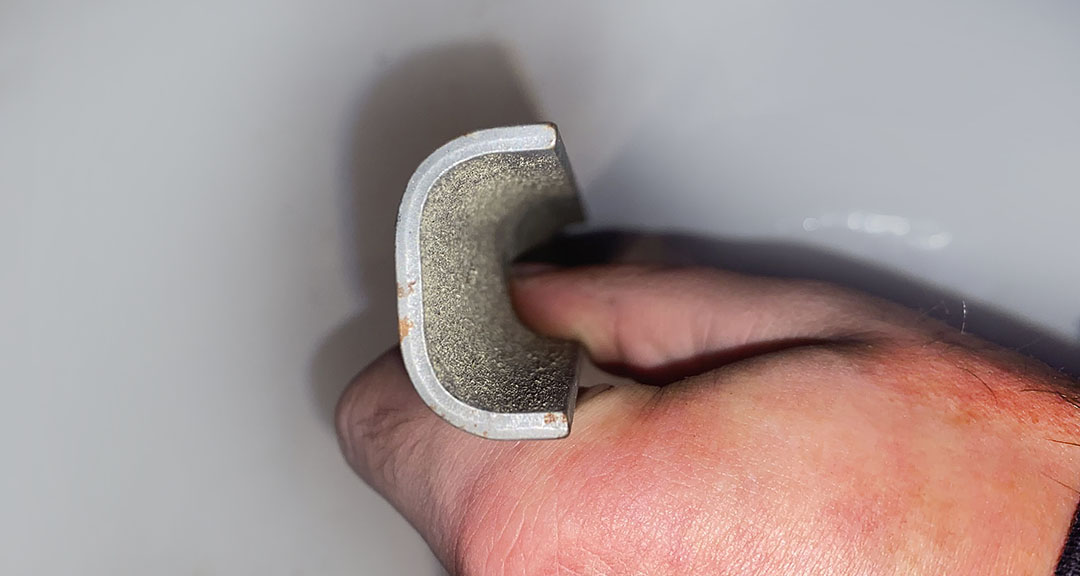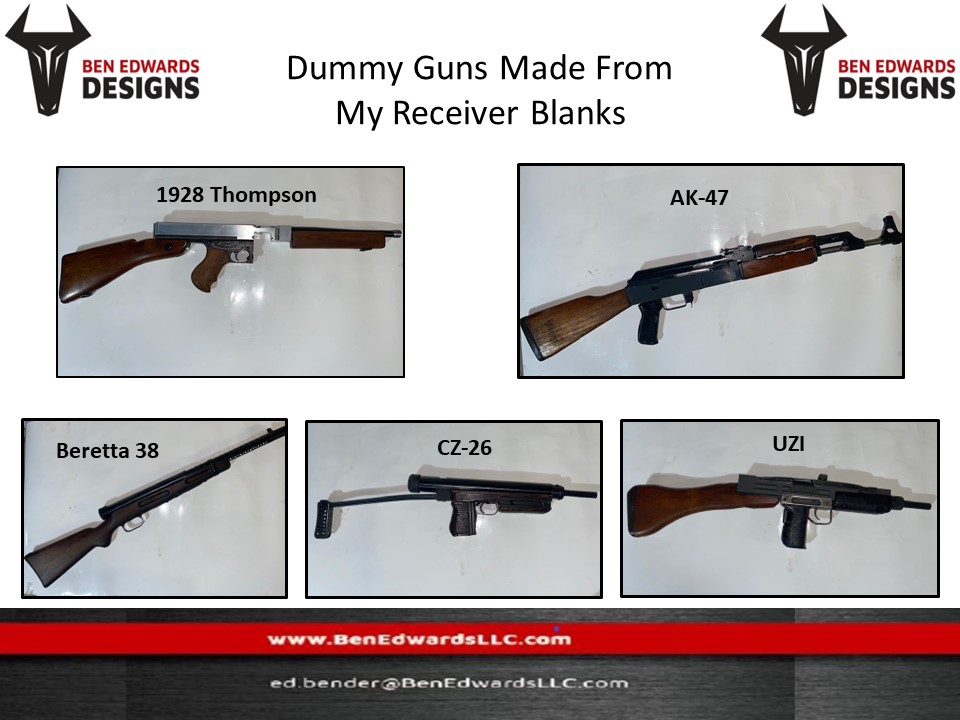Description
This repair section is for only the back portion of the receiver to splice missing sections. This section is made to originally specifications, which is 1018 cold roll steel that is 3mm (.118”) thick.
Ben Edwards Designs Product Catalog
PPSh-41 and PPS-43 SMG’s | Facebook
Background
The PPSh-41 (Russian: Пистоле́т-пулемёт Шпа́гина, istolét-pulemyót Shpágina-41, ‘Shpagin’s machine-pistol-41’) is a Soviet submachine gun designed by Georgy Shpagin as a cheaper and simplified alternative to the PPD-40. A common Russian nickname for the weapon is “papasha” (папа́ша), meaning “daddy”, and it was sometimes called the “burp gun” because of its high fire-rate.
The PPSh is a magazine-fed selective-fire submachine gun using an open bolt, blowback action. Made largely of stamped steel, it can be loaded with either a box or drum magazine and fires the 7.62×25mm Tokarev pistol round.
The PPSh saw extensive combat use during World War II and the Korean War; in Eastern Bloc countries, monuments celebrating the actions of the Red Army commonly feature a PPSh-41. It became one of the major infantry weapons of the Soviet Armed Forces during World War II, with about six million PPSh-41s manufactured in this period, making it the most-produced submachine gun of the war. In the form of the Chinese Type 50 (licensed copy), it continued in use with the Viet Cong as late as 1970, and remains in use with irregular militaries.
Design
The PPSh-41, a Soviet submachine gun, is known for its high rate of fire and durability. It uses the 7.62x25mm Tokarev cartridge and has a chrome-lined bore that can withstand corrosive ammunition and extended cleaning intervals. The weapon is made of low-cost, easily obtained components, including stamped sheet metal and wood, and has a hinged receiver to facilitate field-stripping and cleaning. The PPSh-41 weighs around 12 pounds with a loaded 71-round drum and 9.5 pounds with a loaded 35-round box magazine. While a crude compensator is built into the barrel jacket to reduce muzzle climb during automatic fire, it increases the weapon’s muzzle flash and report.
For those interested in building their own PPSh-41, an 80% receiver or repair section which is a non firearm componet that can help which requires additonal manufacturing to complete the build.
Technical Information
| In service | 1941–1960s (USSR) |
| 1941–present (Other countries) | |
| Production history | |
| Designer | Georgy Shpagin |
| Designed | 1941 |
| Manufacturer | Numerous |
| Produced | 1941–1947 (USSR) |
| No. built | Approx. 6,000,000 |
| Specifications | |
| Mass | 3.63 kg (8.0 lb) (without magazine) |
| Length | 843 mm (33.2 in) |
| Barrel length | 269 mm (10.6 in) |
| Cartridge | 7.62×25mm Tokarev |
| 7.63×25mm Mauser | |
| 9×19mm Parabellum | |
| Action | Blowback, open bolt |
| Rate of fire | 1250 RPM |
| Muzzle velocity | 488 m/s (1,600.6 ft/s) |
| Effective firing range | 150 m[13] – 200 m |
| Maximum firing range | 250m |
| Feed system | 35-round box magazine or 71-round drum magazine |
| 32-round box magazine (Captured German versions) | |
| Sights | Iron sights |







Reviews
There are no reviews yet.